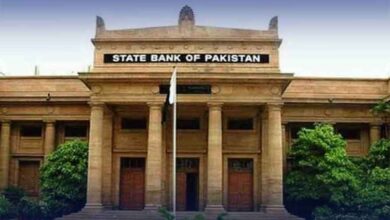ISLAMABAD: The government has yet to permit the import of raw sugar for re-export amid the lingering crisis of sweetener in the domestic market.
Top official sources claimed that the government has deferred the import of raw sugar in one of its internal meetings in recent days.
When contacted, Deputy Prime Minister Ishaq Dar Sunday told this reporter, “The policy on raw sugar is in progress and not yet presented for approval.”
It is relevant to mention that the government miserably failed to curtail the sweetener’s prices in the domestic market when it allowed sugar export provided the domestic price will not go up.
However, the price witnessed a surge, and in Ramazan went up to Rs185 per kilo.
Finally, the government had to intervene and strike an agreement to fix the commodity price at Rs164 per kg for one month. Now, from April onwards, there are apprehensions that the prices may go up again in the domestic market.
According to the draft proposal prepared by the Ministry of Industry for re-export, with an average annual production of 6.150 million metric tons, Pakistan stands as the seventh largest producer of sugar in the world. The sugar industry is a part of the large manufacturing sector and has shown significant growth during the last ten years, highlighting its importance for Pakistan’s economy.
With 82 mills of various sizes, Pakistan’s sugar industry is quite sizable. However, it is based almost entirely on domestically grown sugarcane.
The sugar produced from sugar beet, which is the alternative source, has remained, on average, as low as 1.16 % of the annual production.
Worldwide, sugar beet is used as a raw material for around 20% of sugar production. In this situation, the annual production achieved is inextricably linked to the health of the sugarcane crop in that year.
On average, sugarcane is sown over 1.195 million hectares, mainly in Punjab and Sindh. Owing to the comparatively higher rates of return for the farmers, the sown area of sugarcane has seen a slight increase over the last ten years.
However, the total production of sugarcane is still far lower than the installed capacity for the production of sugar. It is estimated that the sugar mills use around 60% of their hundred-day crushing capacity during a typical crop year.
This translates into an idle capacity of around 4 million metric tons per annum. If spread over the entire year, the idle capacity in the sector is much higher. In addition, the crop yield and sucrose contents depend upon various factors and vary significantly from year to year. This impact is reflected in the variation in the annual production of sugar. During the last ten years, the annual production of sugar has ranged from 4.818 million metric tons in the crop year 2019-20 to 7.870 million metric tons in the crop year 2021-22, indicating a variation of 63%.
In a good crop year, Pakistan’s sugar production exceeds the domestic requirement, creating an export opportunity. During the last crop year, Pakistan exported 7,90,000 metric tons of sugar. On the other hand, in particularly bad crop years, Pakistan is forced to import sugar to meet its domestic demand.
Overall, during the last ten years, Pakistan could export 3.918 million metric tons of sugar while it was forced to import 0.565 billion metric tons. The total earnings from sugar export during this period was US$1,607 million, which is quite meagre as compared to the competitors with similar industry size.







